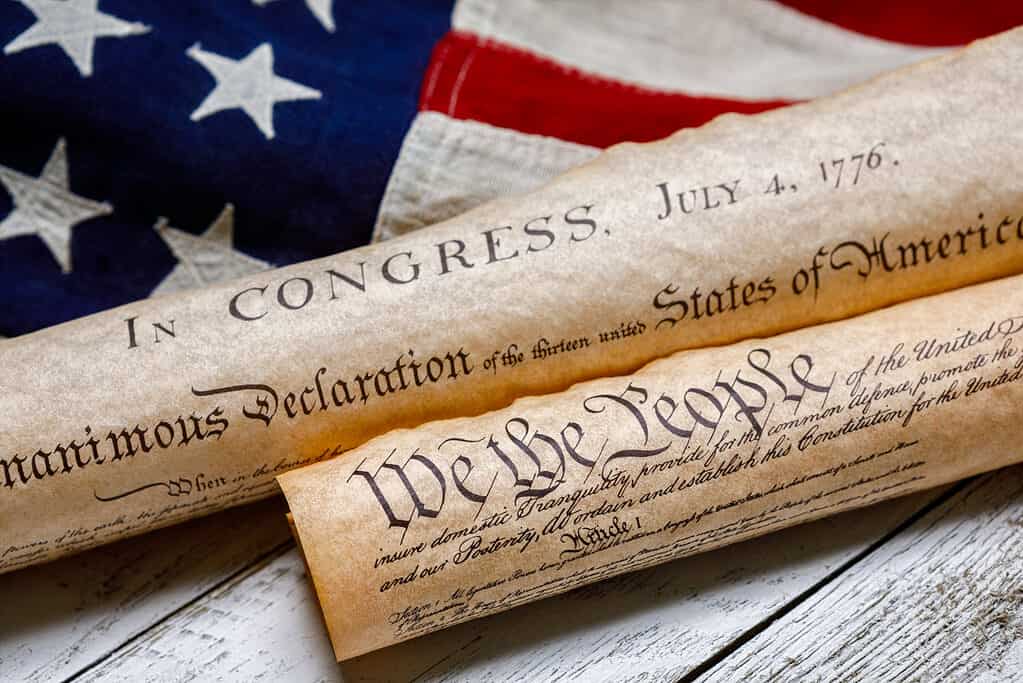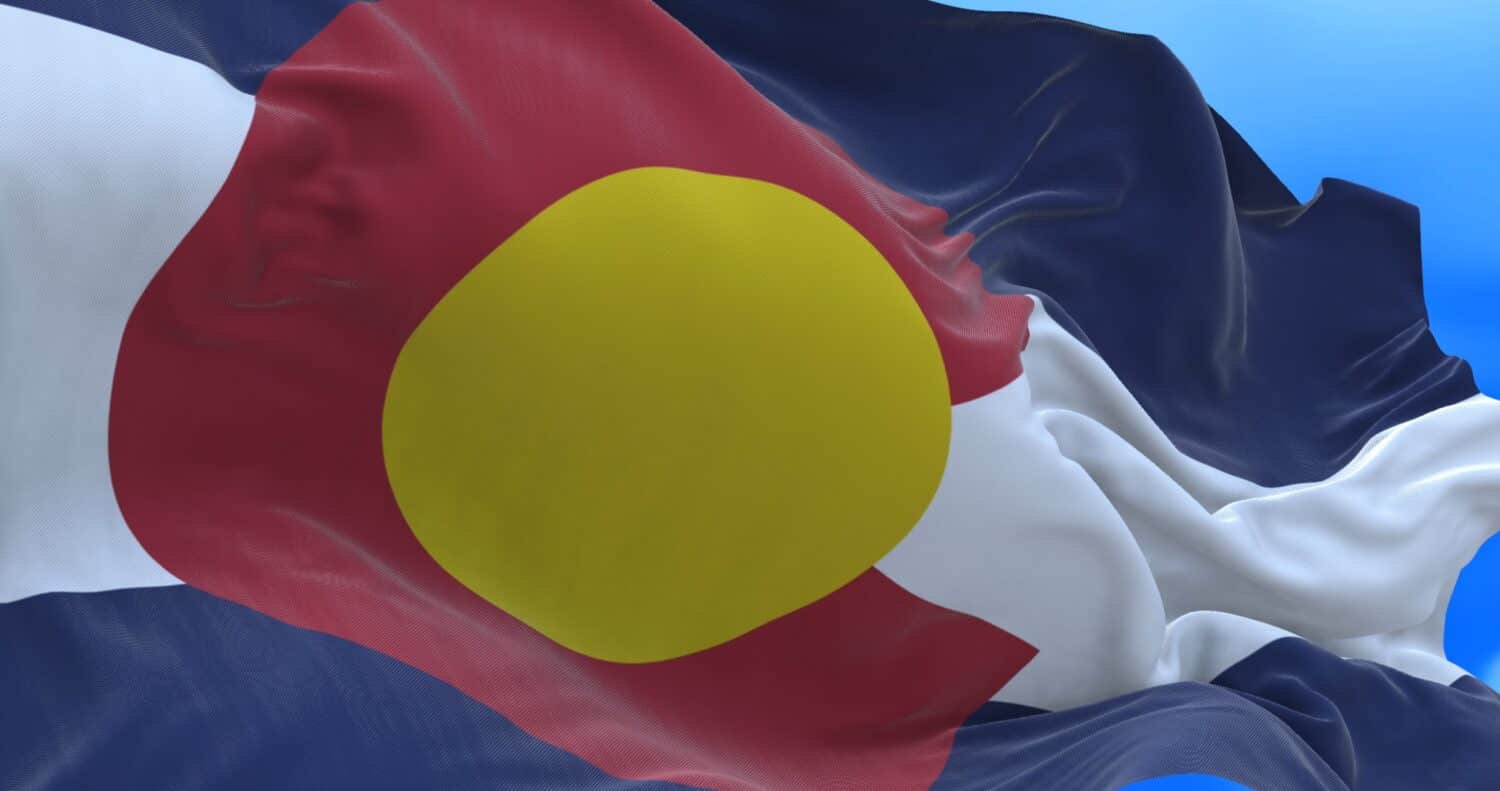Colorado is renowned for many things including its mountains, ski resorts, and abundant wildlife. Yet, none of those things contributed to the state’s nickname. Instead, Colorado earned its nickname in another way. Learn why Colorado is called the Centennial State, and see what other symbols the state has adopted throughout its time.
Why Is Colorado Called the Centennial State

Colorado was officially made a state in 1876.
©bodrumsurf/Shutterstock.com
Colorado is called the Centennial State because it gained statehood in 1876, 100 years after the signing of the Declaration of Independence. Thus, the state was organized during the country’s centennial. Colorado was officially organized into a state on August 1, 1876, about 100 years and four weeks after the signing of the Declaration of Independence.
Originally, parts of what would become the Colorado territory were contained in the Territory of Jefferson. This territory lasted from 1859 until 1861 when the area took on the name, Colorado Territory. The name was chosen because it means “colored red” in Spanish. That may refer to the red sandstone soil in the area or possibly the region surrounding the Colorado River.
Members of the Colorado Territory tried to obtain statehood in the years following the territory’s organization. However, President Andrew Johnson vetoed the bid for statehood in January 1867. The president provided several reasons for his veto including the area’s low population and the need for a census to ascertain which citizens wanted to join as a state.
Interestingly, the president may have had incorrect information about the number of people living in the area at the time. Some sources claimed that 30,000 people or fewer were in the state, but others claimed over 100,000 people live in the state.
In the late 1860s, the Denver Pacific Railway and Telegraph Company was formed. The company developed railways that would eventually make Denver a hub, bolstering support for Colorado’s statehood.
When Did Colorado Adopt the Nickname “The Centennial State?”

The Declaration of Independence was signed 100 years and four weeks before Colorado’s became a state.
©iStock.com/eurobanks
No official origin or adoption of the official nickname “The Centennial State” exists. Yet, some records seem to suggest that the name was introduced soon after Colorado joined the United States. If the nickname was furnished soon after the development of the state, we may never know who coined the phrase.
Although President Grant proclaimed Colorado’s statehood, the term “centennial state” was not included in it.
Nevertheless, the nickname remains, representing the hard work and resolve of the Colorado Territory officials that endeavored to get the territory admitted into the country.
What’s the Motto of Colorado?

The origin of Colorado’s motto, and it’s translation, are a bit unclear.
©bodrumsurf/Shutterstock.com
Colorado’s official motto is a Latin phrase, “Nil Sine Numine.” This motto means “Nothing without the Divine Will.” Some alternative translations of the motto exist including “Nothing without Providence” or “Nothing Without the Deity.”
The state motto may have come from the Colorado Territory’s governor, William Gilpin, or Lewis Ledyard Weld, the territorial secretary. At least one source claims that the governor came up with the motto. One thing is certain: the motto appeared on the original seal for the territory.
This motto is on Colorado’s state seal. Interestingly, the Great Seal of the State of Colorado is the same as the territorial seal that was put forth in 1861. The only difference is that the seal features the words “State of Colorado” rather than “Territory of Colorado.” Also, the year on the bottom of the seal is 1876 instead of 1861. The seal was formally adopted and accepted in 1877.
The Great Seal of the State of Colorado has a lot of other symbolism included in its design as well. For example, the seal has miners’ tools, a pick, and a hammer, symbolizing the mining tradition in the state. A battle axe wrapped in a bundle of rods symbolizes strength, unity, and authority.
The words “Union and Constitution” run on red, white, and blue bands, demonstrating the state’s dedication to remaining faithful to the state’s virtues.
The Official State Animals of Colorado

The Stegosaurus was a large dinosaur whose remains were found in the Morrison Formation.
©Daniel Eskridge/Shutterstock.com
Colorado has a wide variety of different animals and fossils that serve as symbols in the state. Each of them has some kind of symbolic importance to the state. For example, the state animal is the rocky mountain bighorn sheep, and they were as such in 1961. Wildlife experts once thought the species was extirpated in the state. Fortunately, the sheep made a great recovery starting in 1979 when herds were introduced to the area.
Meanwhile, the state bird is the lark bunting, a migratory bird that lives in the state. These birds were made the state bird of Colorado in 1931, also making them the first animal symbol in Colorado.
Other symbols in the state are less common. For example, Colorado has a state dinosaur, the Stegosaurus. The Stegosaurus was named the state dinosaur in 1982.
Colorado also has a state insect, the hairstreak butterfly, as well as state pets, rescue dogs, and rescue cats. Making rescue dogs and rescue cats the state pets was seen as a controversial move, but it passed in 2013. These animals each symbolize something special about the state, including animals discovered in the area to those held dear by its citizens.
Learning why Colorado is called “The Centennial State” may not be as exciting as the nicknames of other states. Simply put, the state was formed 100 years after the Declaration of Independence. That was during the United States of America’s centennial year. Unfortunately, no sources mention the origin of the nickname. Yet, a great deal of the state’s history is still readily available for viewing, including the push to make Colorado a state.
The photo featured at the top of this post is © Alexander Lukatskiy/Shutterstock.com
Thank you for reading! Have some feedback for us? Contact the AZ Animals editorial team.






